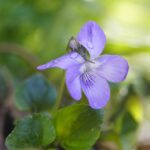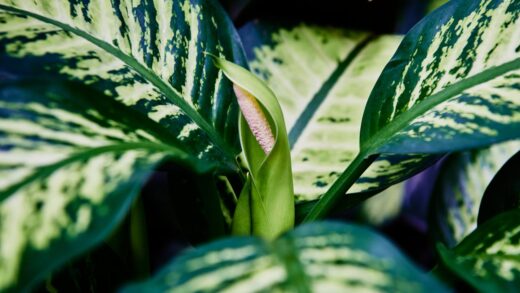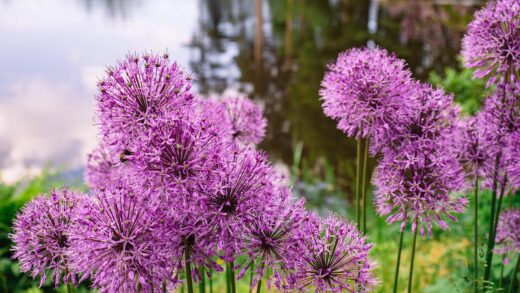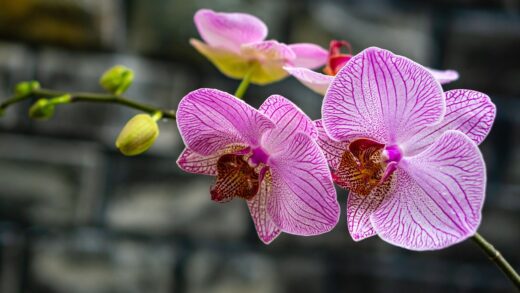The nutritional needs of the beautiful bleeding heart are intrinsically linked to the health and composition of the soil in which it grows. This plant thrives in a soil environment that is rich in organic matter, mirroring the humus-laden floor of its native woodland habitat. Before even considering the application of fertilizers, the primary focus should be on building a foundation of healthy, living soil. Organic matter, such as compost, well-rotted manure, and leaf mold, is the cornerstone of this foundation, providing a slow and steady release of a wide spectrum of essential nutrients as it is broken down by soil microorganisms.
Beyond simply supplying nutrients, organic matter fundamentally improves the soil’s structure and its ability to manage those nutrients. It enhances the soil’s cation exchange capacity (CEC), which is a measure of its ability to hold onto positively charged nutrient ions, such as calcium, magnesium, and potassium, preventing them from being leached away by water. This means that the nutrients are held in reserve in the soil, readily available for the plant’s roots to absorb as needed. A soil with a high organic content is, therefore, a more efficient and stable growing medium.
Furthermore, the presence of ample organic material fosters a thriving ecosystem of beneficial soil life, including bacteria, fungi, earthworms, and other organisms. This soil food web is critical for nutrient cycling. These organisms decompose organic materials, converting complex compounds into simpler forms that the plant can readily use. This natural process of nutrient mineralization ensures a continuous supply of nourishment for the plant throughout its growing season, reducing the reliance on synthetic fertilizers and creating a more resilient and self-sustaining garden environment.
Therefore, the most significant contribution you can make to the nutrition of your beautiful bleeding heart happens before you even apply any fertilizer. It involves the consistent practice of amending the soil with high-quality organic matter, both at the time of planting and as an annual top dressing. This approach not only feeds the plant but also feeds the soil, creating a virtuous cycle that supports robust plant health, vigorous growth, and a spectacular floral display year after year.
Understanding fertilizer basics
When supplemental fertilization is necessary, it is helpful to have a basic understanding of what fertilizers are and how they work. Commercial fertilizers are typically labeled with three numbers, known as the N-P-K ratio, which represent the percentage of nitrogen (N), phosphorus (P), and potassium (K) they contain. These three macronutrients are essential for plant health. Nitrogen is crucial for vegetative growth, promoting lush, green foliage. Phosphorus plays a vital role in root development, flowering, and energy transfer. Potassium is important for overall plant vigor, disease resistance, and water regulation.
More articles on this topic
For the beautiful bleeding heart, a balanced fertilizer is generally the best choice. A balanced formula, such as 10-10-10 or 5-10-5, provides these three key nutrients in relatively equal proportions, supporting all aspects of the plant’s development without promoting one at the expense of another. Using a fertilizer that is excessively high in nitrogen, for example, could lead to a profusion of weak, leafy growth with very few flowers. It is about providing a complete diet rather than an excess of one particular nutrient.
Fertilizers also come in various forms, including granular, liquid, and slow-release formulations. Slow-release granular fertilizers are often an excellent choice for perennials like the beautiful bleeding heart. These are coated pellets that break down gradually over an extended period, providing a steady supply of nutrients for several months with just a single application. This method mimics the slow, natural release of nutrients from decomposing organic matter and reduces the risk of over-fertilizing or burning the plant’s sensitive roots.
Liquid fertilizers, which are mixed with water and applied during irrigation, provide nutrients in a readily available form that the plant can absorb quickly. While effective, they need to be applied more frequently, and care must be taken not to exceed the recommended concentration. Regardless of the type of fertilizer you choose, it is imperative to read and follow the manufacturer’s instructions carefully regarding application rates and frequency to ensure you are feeding your plant correctly and safely.
When and how to fertilize
The timing of fertilizer application is critical to ensure that the nutrients are available to the beautiful bleeding heart when it needs them most. The ideal time to fertilize is in the early spring, just as the first new shoots are beginning to emerge from the ground. Applying fertilizer at this stage provides the plant with the necessary resources to support its rapid flush of spring growth, including the development of its foliage and the formation of flower buds. A single application in early spring is often sufficient for the entire growing season, especially if the plant is growing in organically rich soil.
More articles on this topic
When applying a granular, slow-release fertilizer, sprinkle the recommended amount evenly on the soil surface around the base of the plant, extending out to the dripline (the edge of its foliage). Be careful to avoid letting the fertilizer granules come into direct contact with the plant’s crown or emerging shoots, as this can cause chemical burns. After applying the granules, it is important to gently work them into the top inch or so of the soil and then water the area thoroughly. Watering helps to activate the fertilizer and begin the process of carrying the nutrients down to the root zone.
If you opt to use a liquid fertilizer, you would typically apply it every few weeks during the peak growing season in spring, according to the product’s directions. It is generally best to apply liquid feed to soil that is already slightly moist to ensure even distribution and prevent root burn. Avoid applying any type of fertilizer to a plant that is stressed from drought, as its ability to take up nutrients is compromised, and the fertilizer salts can cause further damage to the roots.
It is crucial to cease all fertilization after the plant has finished flowering and begins to enter its summer dormancy. Fertilizing a dormant or semi-dormant plant is not only wasteful, as the plant is not actively taking up nutrients, but it can also be harmful. Late-season fertilization can stimulate weak, new growth that will not have time to harden off before winter, making the plant more susceptible to cold damage. The plant needs this period of rest to prepare for the next season’s growth.
Organic fertilization options
For gardeners who prefer a more natural approach, there are numerous excellent organic options for feeding the beautiful bleeding heart. These materials not only supply nutrients but also contribute to the overall health and structure of the soil. The most fundamental organic fertilizer is high-quality compost. Applying a one- to two-inch layer of compost as a top dressing around the base of the plant each spring is a superb way to provide a balanced and slow-releasing source of nutrients and micronutrients that will sustain the plant throughout its active season.
Well-rotted animal manures, such as cow, horse, or chicken manure, are another valuable source of organic nutrients. It is critical that the manure is fully composted or aged before use, as fresh manure is too high in nitrogen and can burn plant roots. Composted manure can be worked into the soil before planting or applied as a top dressing in the spring, similar to compost. It provides a good balance of essential nutrients and significantly enriches the soil with beneficial organic matter.
For a more targeted nutrient boost, other organic amendments can be used. Bone meal is a fantastic natural source of phosphorus and calcium, which are vital for strong root development and flower production. It can be mixed into the planting hole when transplanting or lightly worked into the soil around established plants in the spring. Blood meal is a rich source of nitrogen, but it should be used sparingly with the beautiful bleeding heart to avoid promoting excessive foliage at the expense of flowers.
Other organic liquid fertilizers, such as fish emulsion or compost tea, can also be beneficial. These are typically diluted with water and applied to the soil around the plant during the spring growth period. They provide a quick but gentle boost of nutrients that are easily absorbed by the plant. The key advantage of using organic fertilizers is that they support the entire soil ecosystem, feeding the microorganisms that in turn make nutrients available to the plant, creating a healthier and more resilient garden in the long run.
Recognizing nutrient deficiencies
While the beautiful bleeding heart is not typically prone to nutrient deficiencies, especially when grown in well-amended soil, it is useful for gardeners to be able to recognize the potential signs. A general lack of vigor, stunted growth, or smaller-than-usual leaves can be an overall indicator that the plant is not receiving adequate nutrition. However, these symptoms can also be caused by other issues such as improper watering or insufficient light, so it is important to consider all aspects of the plant’s care.
One of the most common signs of a nutrient deficiency is chlorosis, or the yellowing of leaves. If the yellowing appears primarily on the older, lower leaves, it may signal a nitrogen deficiency, as nitrogen is a mobile nutrient that the plant will move from old tissues to new growth. If the yellowing occurs on the new, upper leaves while the older leaves remain green, it could indicate a deficiency in an immobile nutrient like iron, which can sometimes occur in soils with a high pH.
A phosphorus deficiency can sometimes manifest as a purplish tinge to the leaves and may also result in poor flowering and stunted root growth. A lack of potassium can lead to yellowing along the margins and tips of the older leaves, and the plant may show a general weakness and increased susceptibility to diseases. It is important to note that diagnosing specific nutrient deficiencies based on visual symptoms alone can be challenging, as the signs can be similar and multiple factors are often at play.
If you suspect a significant nutrient deficiency, the most accurate way to confirm it is through a professional soil test. A soil test will provide a detailed report on the nutrient levels and pH of your soil, taking the guesswork out of fertilization. Based on the results, you can then apply specific amendments to correct any imbalances. However, for most home gardeners, the proactive approach of maintaining rich, organic soil and providing a light feeding with a balanced fertilizer in the spring will prevent most nutrient-related problems from ever occurring.


















